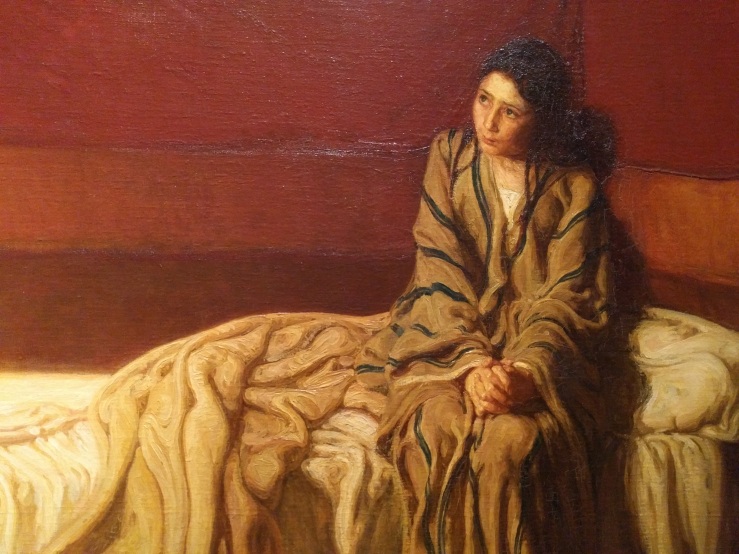“Art for Advent 2017” (Dr. James Romaine): For the third year in a row, my friend James Romaine, an art historian, is releasing four videos in which he discusses historically significant artworks keyed to the season of Advent. Last year he looked at works from the Met Cloisters; this year he’s focusing on paintings by the African American artist Henry Ossawa Tanner (1859–1937). If you want to learn more about Tanner, see Romaine’s essay on him in the recently published book Beholding Christ and Christianity in African American Art, which Romaine coedited; I own a copy and look forward to reviewing it on the blog in the new year! (Update: Here’s the book review.)

Romaine’s first “Art for Advent 2017” video covers Tanner’s Annunciation, which has been the header image of this website for the last two months. I saw the painting in person for the first time this summer at the Philadelphia Museum of Art, and it transfixed me. (Along with Rogier van der Weyden’s Crucifixion, it was my favorite piece on display.) It was the first major painting of a biblical subject that Tanner completed following his six-week trip to the Holy Land, undertaken as part of his search for historically authentic imagery.
First Sunday of Advent: The Annunciation:
Second Sunday of Advent: The Holy Family:
Third Sunday of Advent: Flight into Egypt:
Fourth Sunday of Advent: Christ and His Mother Studying the Scriptures:
To view “Art for Advent” videos from previous years, visit Romaine’s Seeing Art History YouTube channel.
+++
“The Joyous Mysteries” (The Liturgists): Meditating on the five “Joyous Mysteries” of Christ’s childhood—the Annunciation, the Visitation, the Nativity, the Presentation in the Temple, and the Finding of Christ in the Temple—is a Catholic devotional practice, part of “praying the rosary,” that some Protestants have found spiritually helpful and have adapted to their own quiet times with God.
To draw us into the movements of the Christmas story, The Liturgists invited four visual artists to create a work based on one of the first four Joyous Mysteries. They then shot two videos for each artwork—one an “Artist Narrative,” where the artist talks about his or her work and process, and the other an “imago divina” meditation led by Mike McHargue (“Science Mike”), which guides us through looking at and responding to the artwork. The videos are backed by original instrumental compositions by Tim Coons of Giants & Pilgrims and one by Jon Leverkuhn, which you can download for free on Bandcamp. You can also purchase signed, limited edition art prints for $35 each, or $95 for a full set.
Here is the list of videos; I’ve embedded my two favorites (I’m partial to figurative art):
1. The Annunciation, with art by Betony Coons: Meditation | Artist Narrative
2. The Visitation, with art by Wes Sam-Bruce: Meditation | Artist Narrative
3. The Nativity, with art by Katie Mai-Fusco: Meditation | Artist Narrative
4. The Presentation, with art by Tony Garza: Meditation | Artist Narrative
Thank you, Liturgists and friends, for this impressive Advent offering! Continue reading “Three Advent video series”

